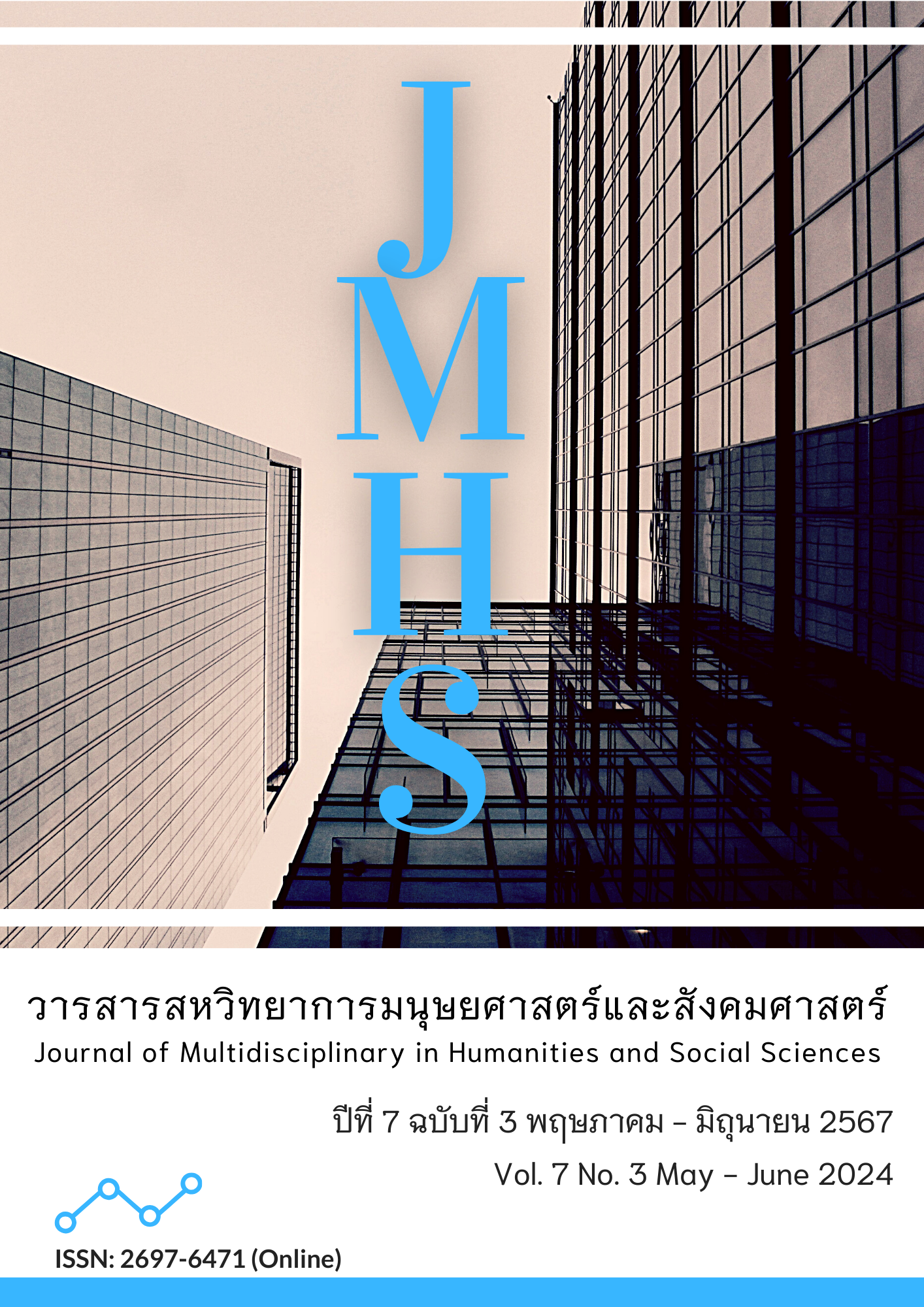Research on the Craft and Social Change: A Case Study of the Ninigou in Huaiyang
Main Article Content
Abstract
Crafts serve as pivotal social artifacts that intricately intersect with the domains of economy, society, and ritual practices. This qualitative study delved into the craft and cultural values of Ninigou, scrutinizing their evolution across different developmental stages. Employing fieldwork methods and in-depth interviews, the research aimed to achieve three primary objectives. Firstly, to analyze the transformation of Ninigou as a traditional craft within the context of societal changes. Secondly, to investigate the cultural significance of Ninigou and its societal impact amid periods of social change. Lastly, to explore the evolution of Ninigou within a global context by drawing comparisons with Sia-kaban in Thailand. The findings revealed significant enhancements in Ninigou pottery, attributed to the incorporation of ceramics. The infusion of acrylic paint has enriched its colour palette, while the diversification of shapes demonstrates proactive responsiveness to market demands. This evolutionary process reflected changes in reproduction, expression, and reconstruction. Ninigou symbolizes the protection of nature, ancestral nostalgia, and aspirations for future generations. It embodied the desire for agricultural prosperity and underscored the relentless pursuit of an improved quality of life. In contemporary society, Ninigou has transitioned into a decorative and entertaining item, serving as both a souvenir and an ornament. This shift from hidden cultural traits to outward craft features signifies a progression from sacredness to secularism, ultimately embracing entertainment. The study elucidated the intricate relationship between Ninigou craftsmanship and its cultural significance, offering valuable insights into the dynamic evolution of Ninigou within an evolving social landscape.
Article Details

This work is licensed under a Creative Commons Attribution-NonCommercial-NoDerivatives 4.0 International License.
Views and opinions appearing in the Journal it is the responsibility of the author of the article, and does not constitute the view and responsibility of the editorial team.
References
Abyareh, R. (2009). Tourism attractions and their influence on handicraft employment in Isfahan(Master’s Thesis). Lulea University of Technology.
Adamson, G. (2013). The Invention of Craft. London: Bloomsbury Publishing.
Barrère, C. (2016). Cultural heritages: From official to informal. City, Culture and Society, 7(2), 87-94. https://doi.org/10.1016/j.ccs.2015.11.004
Costin, C. L. (1998). Introduction: Craft and social identity. Archeological Papers of the American Anthropological Association, 8(1), 3-16. https://doi.org/10.1525/ap3a.1998.8.1.3
DeMarrais, E., & Robb, J. (2013). Art makes society: an introductory visual essay. World Art, 3(1), 3-22. https://doi.org/10.1080/21500894.2013.782334
Fatt, B. S., & Bakansing, S. M. (2016). An alternative raw material in handicraft-making by using the oil palm fronds: A community based tourism exploratory study at Kota Belud, Sabah. Tourism, Leisure and Global Change, 1(1), 25-37.
Gombrich, E. H. (1995). The Story of Art. (Vol. 12). London: Phaidon.
Greenfield, P. M. (2016). Social change, cultural evolution, and human development. Current Opinion in Psychology, 8, 84-92. https://doi.org/10.1016/j.copsyc.2015.10.012
Hou, J., & Chan, E. H. (2017). Policy approaches for sustainable conservation of built heritage using transfer of development rights: International comparison. Sustainable Development, 25(6), 528-545. https://doi.org/10.1002/sd.1676
Leesuwan, V. (1984). Thai Art & Craft. Bangkok: Panya Printing.
Miksic, J. N. (2009). Southeast Asian ceramics: new light on old pottery. Singapore: Editions Didier Millet.
Parsons, T. (2013). The Social System. (2nd ed.). London: Routledge.
Pierantoni, L. (2018). The Heritage Value of the Craft Sector in Fast-Growing Cities. In A. Petrillo, Bellaviti, P. (Ed.), Sustainable Urban Development and Globalization (pp. 289-297). Berlin: Springer.
Qian, X., Zhang, N., Wang, W., Zhang, S., Gao, C., & Zheng, B. (2016). Application and Research Development with Touch Point and Non-touch Point of Shirt Design Efficacy. In Paper presented at the 2016 Eighth International Conference on Measuring Technology and Mechatronics Automation (ICMTMA).
Rogerson, C. (2010). The enterprise of craft: constraints and policy challenges in South Africa. Acta Academica, 42(3), 115-144. Retrieved from https://hdl.handle.net/10520/EJC15494
Rolfe, J., & Windle, J. (2003). Valuing the protection of aboriginal cultural heritage sites. Economic Record, 79(SpecialIssue), S85-S95. https://doi.org/10.1111/1475-4932.00094
Ruan, C. (2022). The Present Situation and Re-protection of Intangible Cultural Heritage NiNigou. Asian Journal of Social Science Studies, 7(2), 58. https://doi.org/10.20849/ajsss.v7i2.1011
Scrase, T. J. (2003). Precarious production: Globalisation and artisan labour in the Third World. Third World Quarterly, 24(3), 449-461. https://doi.org/10.1080/0143659032000084401
Shiner, L. (2012). “Blurred Boundaries”? Rethinking the concept of craft and its relation to art and design. Philosophy Compass, 7(4), 230-244. https://doi.org/10.1111/j.1747-9991.2012.00479.x
Sukkham, A. (2018). Si Satchanalai figurines: reconstruction of ancient daily life, beliefs, and environment in Siam during the sixteenth century. International Journal of Historical Archaeology, 22(4), 800-842. https://doi.org/10.1007/s10761-017-0449-7
Underhill, A. P. (2002). Craft production and social change in northern China. Boston: Springer.
Yang, L., & An, D. (2008). Handbook of Chinese Mythology. New York: Oxford University Press.
Zhang, B. (2015). Research on Sustainable Development of Folk Culture Industry in Henan. In Paper presented at the 2015 2nd International Conference on Education, Language, Art and Intercultural Communication (ICELAIC-15).


